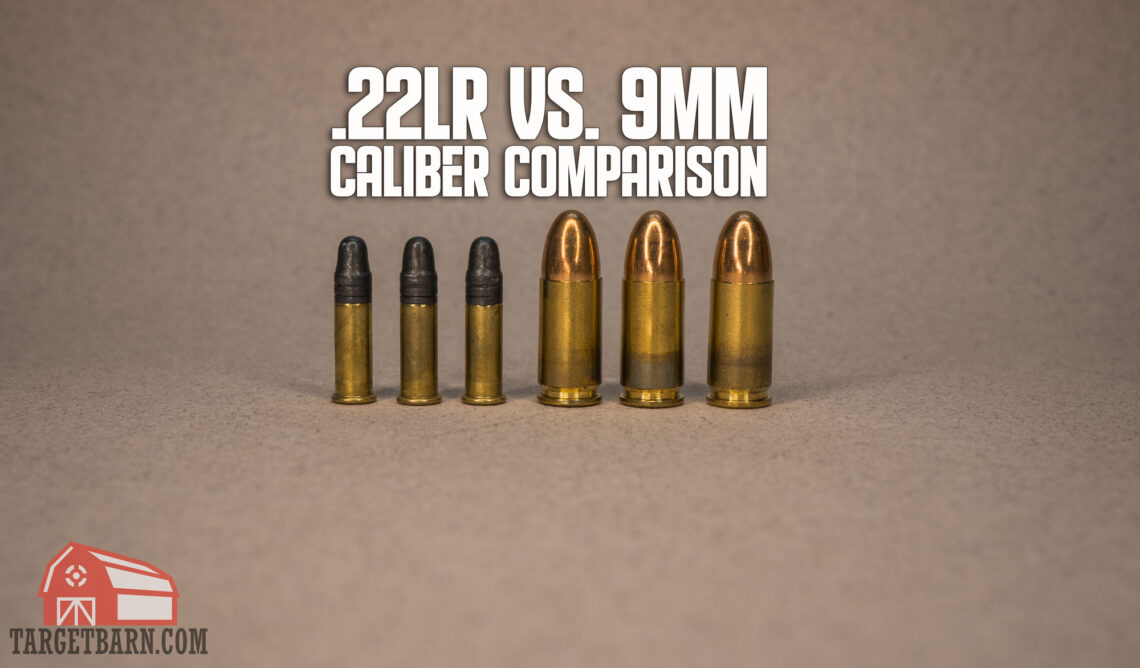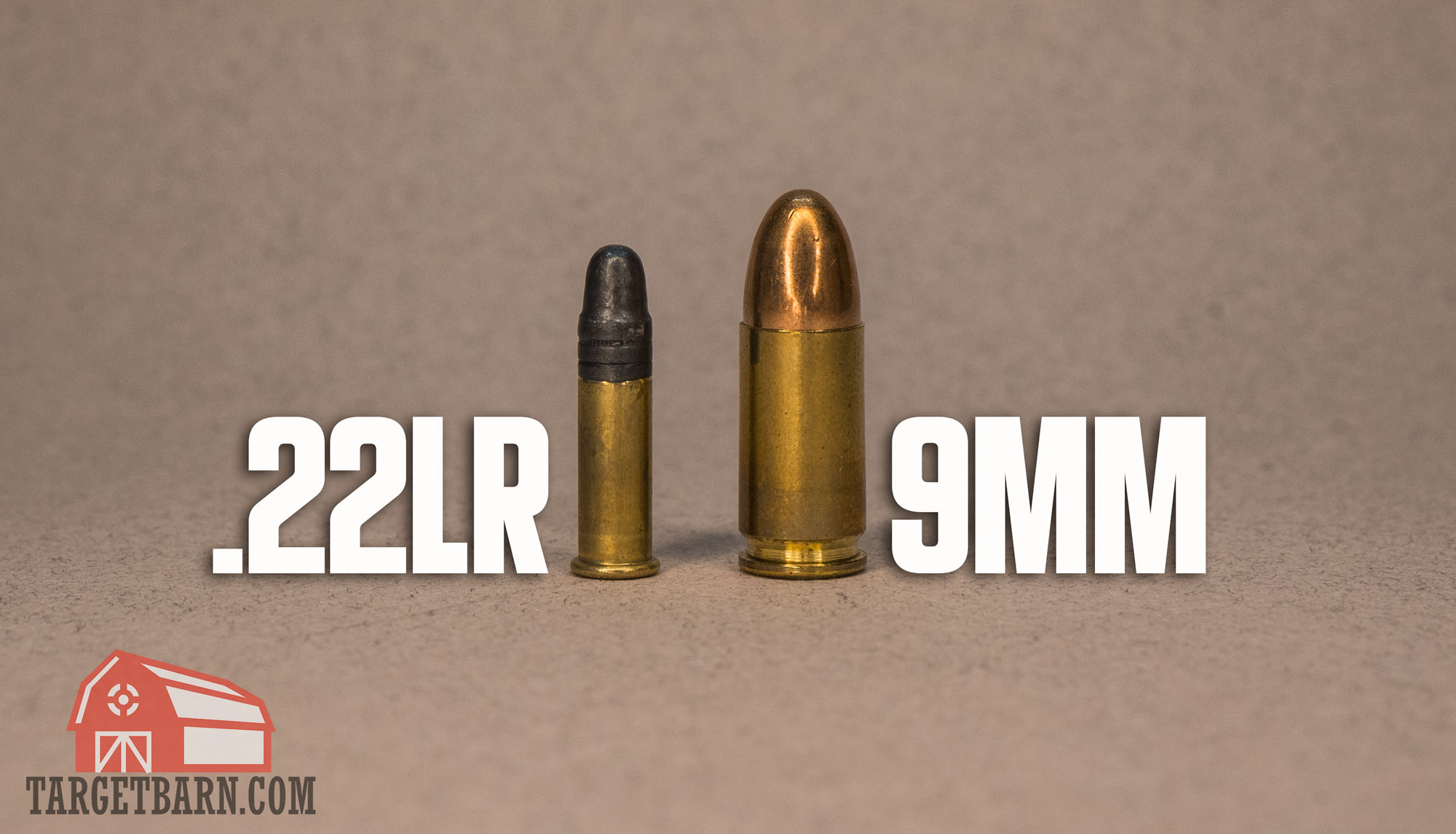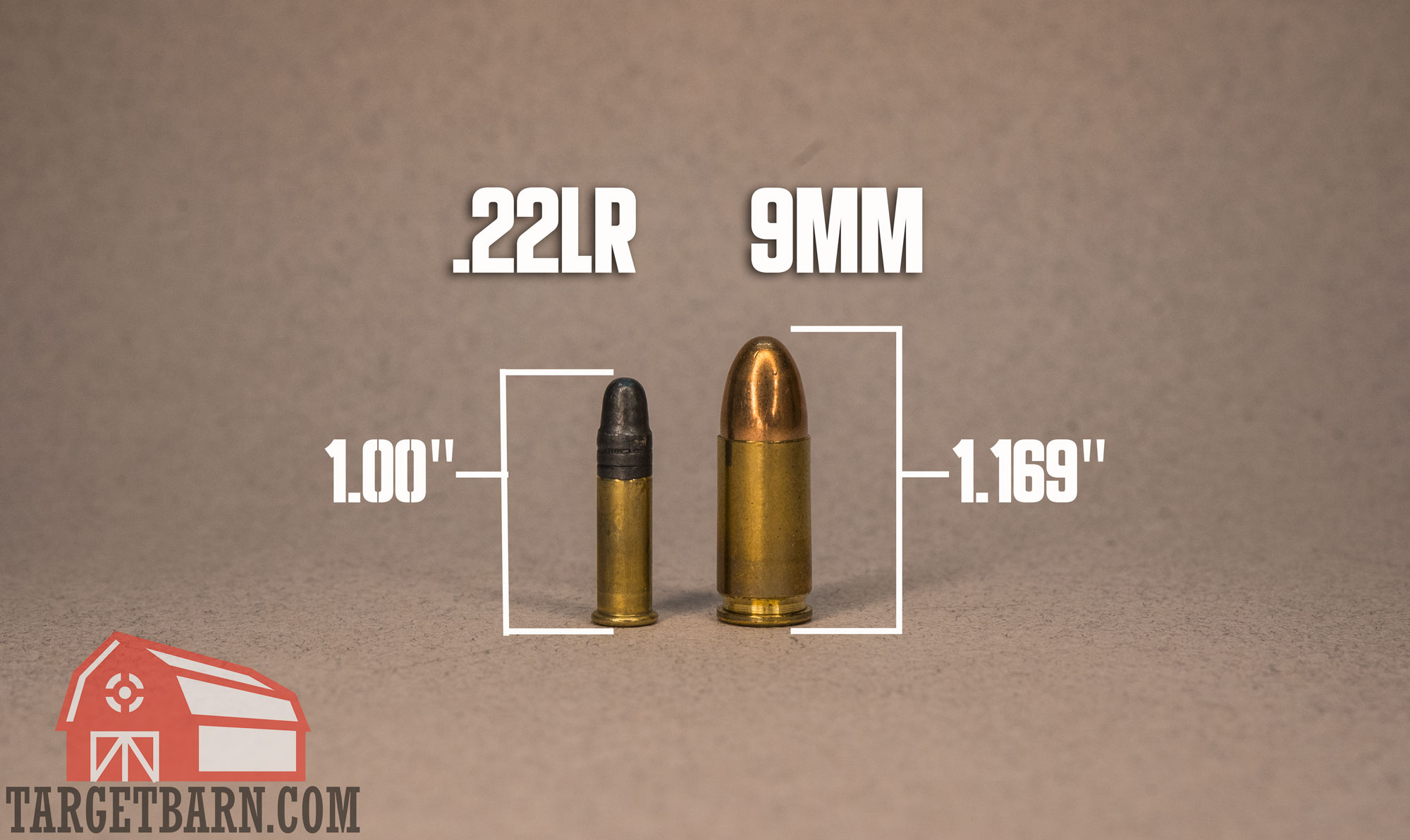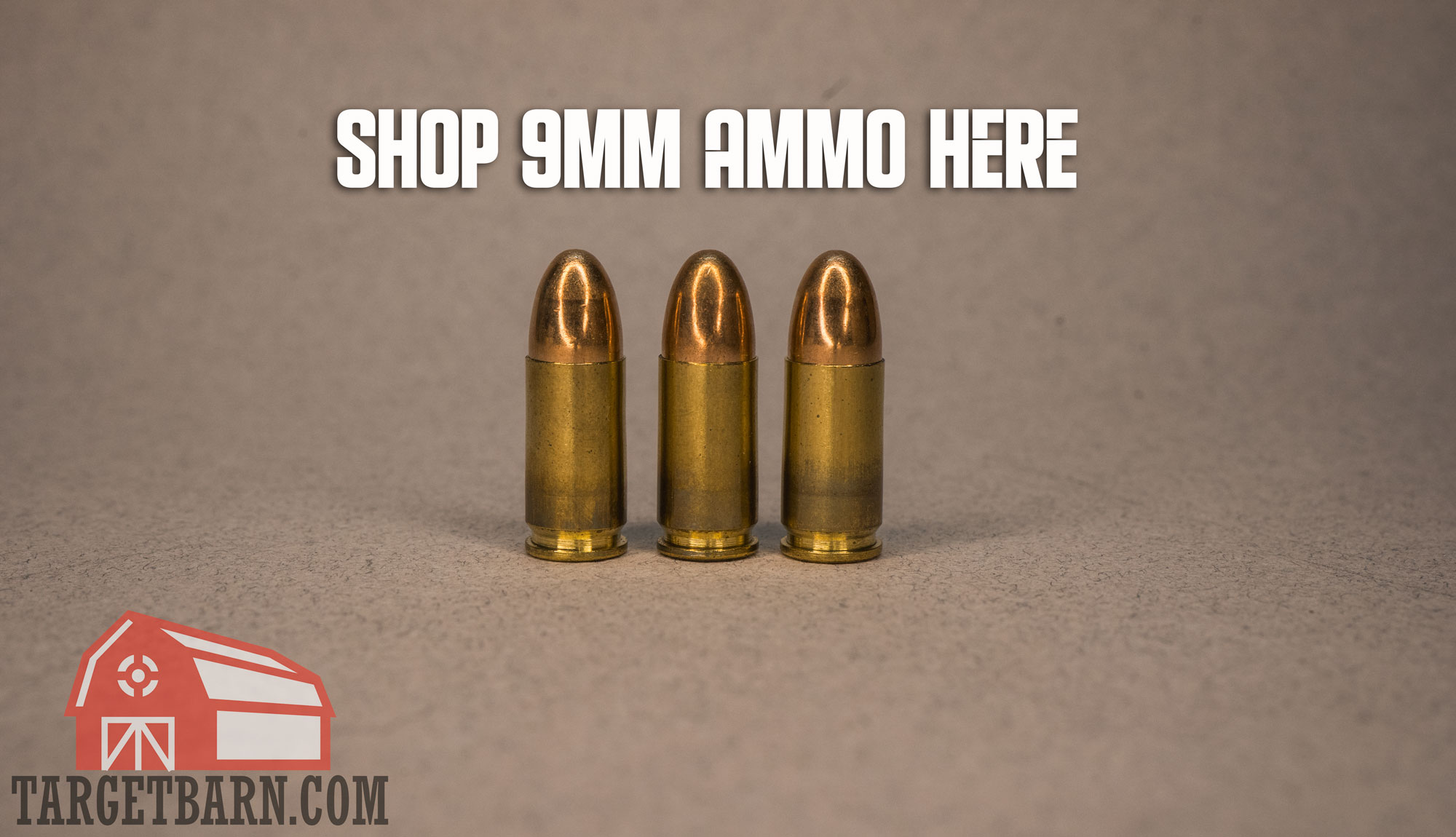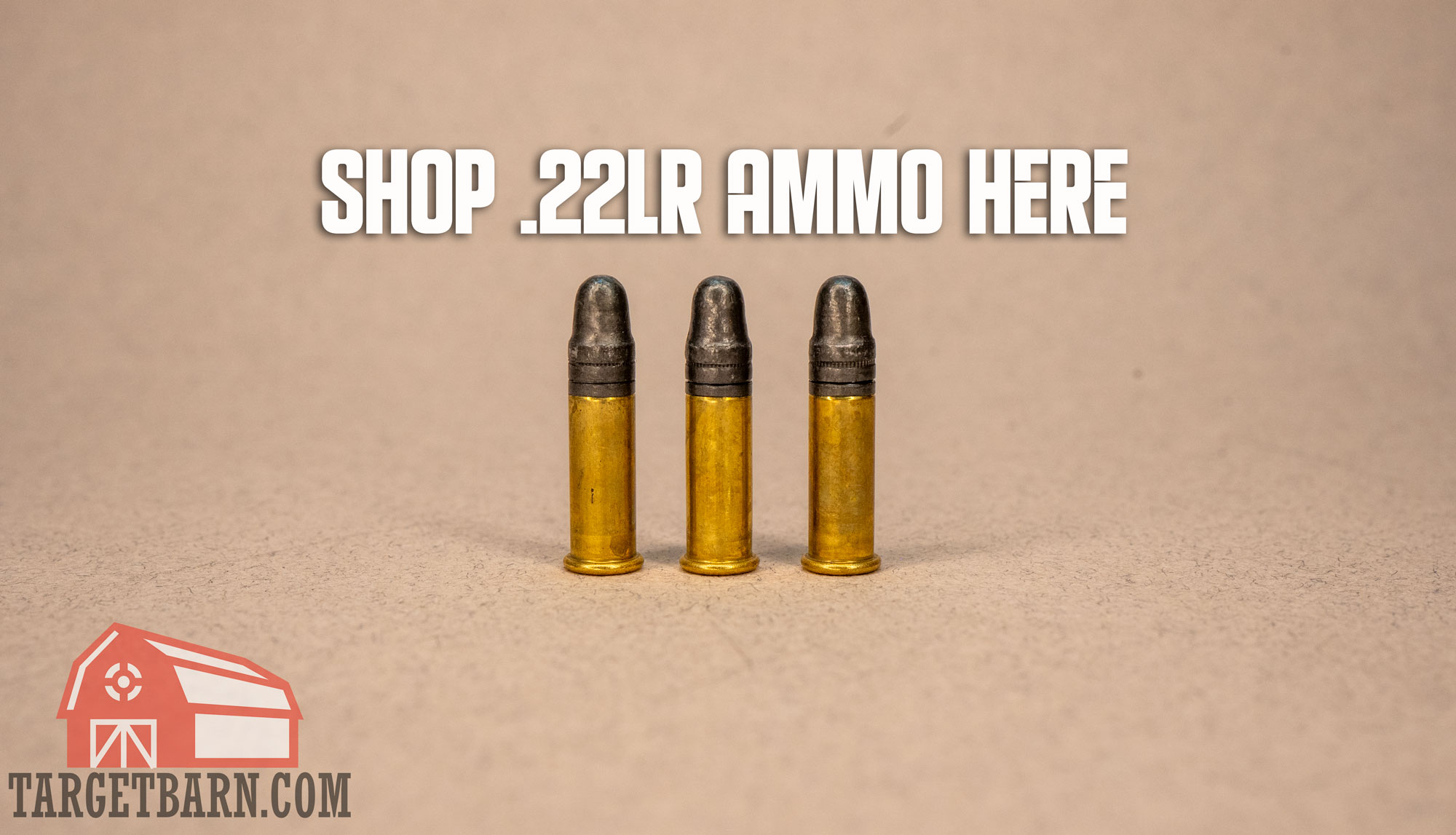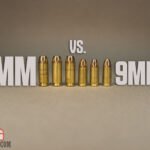The .22LR vs. 9mm: two of the most popular calibers that serve totally different purposes.
Today we’re taking a look at the differences between these two rounds to help you decide which you might want to shoot!
.22LR vs. 9mm Quick Facts
- The .22LR is a rimfire round; the 9mm is a centerfire round
- J. Stevens Arms & Tool Company designed the .22LR in the U.S. in 1887; Georg Luger of the German Empire designed the 9mm in 1901
- The .22LR has a maximum pressure of 24,000 psi, while the 9mm’s maximum pressure is 35,000 psi
- .22LR ammo is generally the cheapest caliber on the market
- The .22LR is popular for plinking, varmint hunting, and competition and is commonly shot out of both rifles and pistols
- The 9mm is primarily a pistol caliber and is popular for self defense and competition shooting
- The 9mm is the better choice for self defense, though some shooters opt for the .22LR
- The .22LR has muzzle velocities ranging from 600 fps to 1200 fps depending on the load out of a pistol
- The 9mm has muzzle velocities ranging from 800 fps to 1350 fps out of a pistol
.22LR vs. 9mm: The Basics
| .22LR | 9mm | |
|---|---|---|
| Designer | J. Stevens Arms & Tool Company | Georg Luger |
| Designed | 1887 | 1901 |
| Place of Origin | United States | German Empire |
| Case Type | Rimmed, straight | Rimless, tapered |
| Parent Case | .22 Long | 7.65x21mm Parabellum |
| Bullet Diameter | .223" | .355" |
| Neck Diameter | .226" | .380" |
| Base Diameter | .226" | .391" |
| Rim Diameter | .278" | .392" |
| Rim Thickness | .043" | .050" |
| Case Length | .613" | .754" |
| Overall Length | 1.00" | 1.169" |
| Maximum Pressure | 24,000 psi | 35,000 psi |
It’s hard to compare the .22LR vs. 9mm rounds because they’re so different. Both calibers rank at the top of the most popular rounds in the United States, but excel in different aspects.
The 9mm is one of the most popular defensive rounds and tends to be the default caliber that new shooters use when picking out a gun for self defense. It is also largely used in different shooting sports like USPSA and IDPA. The 9mm is a centerfire handgun round, meaning that the round ignites when the gun’s firing pin strikes the round’s primer, located in the center of the round.
On the other hand, the .22LR is a rimfire round widely used in both rifles and pistols. The .22LR’s primer is located in the round’s rim. This means that the gun’s firing pin strikes the round’s rim in order to ignite the round. Shooters opt for the .22LR for affordable plinking at the range, varmint hunting, and competitions like Rimfire Challenge, Steel Challenge, and NRL22. The caliber is often used to introduce new or young shooters to the shooting sports because of its extremely light recoil.
.22LR vs. 9mm: Size
The 9mm and .22LR are easily distinguishable from one another due to their size differences. The 9mm is overall a bigger round. It is over 1.5 times larger than the diameter of the .22LR, and its overall length is taller as well.
You can also look at the bullet weight, measured in grains, to see the size difference between the two rounds. Common bullet weights for the 9mm are 115gr., 124gr., and 147gr., while common .22LR bullet weights are 36gr., 38gr., and 40gr.
.22LR vs. 9mm: Recoil
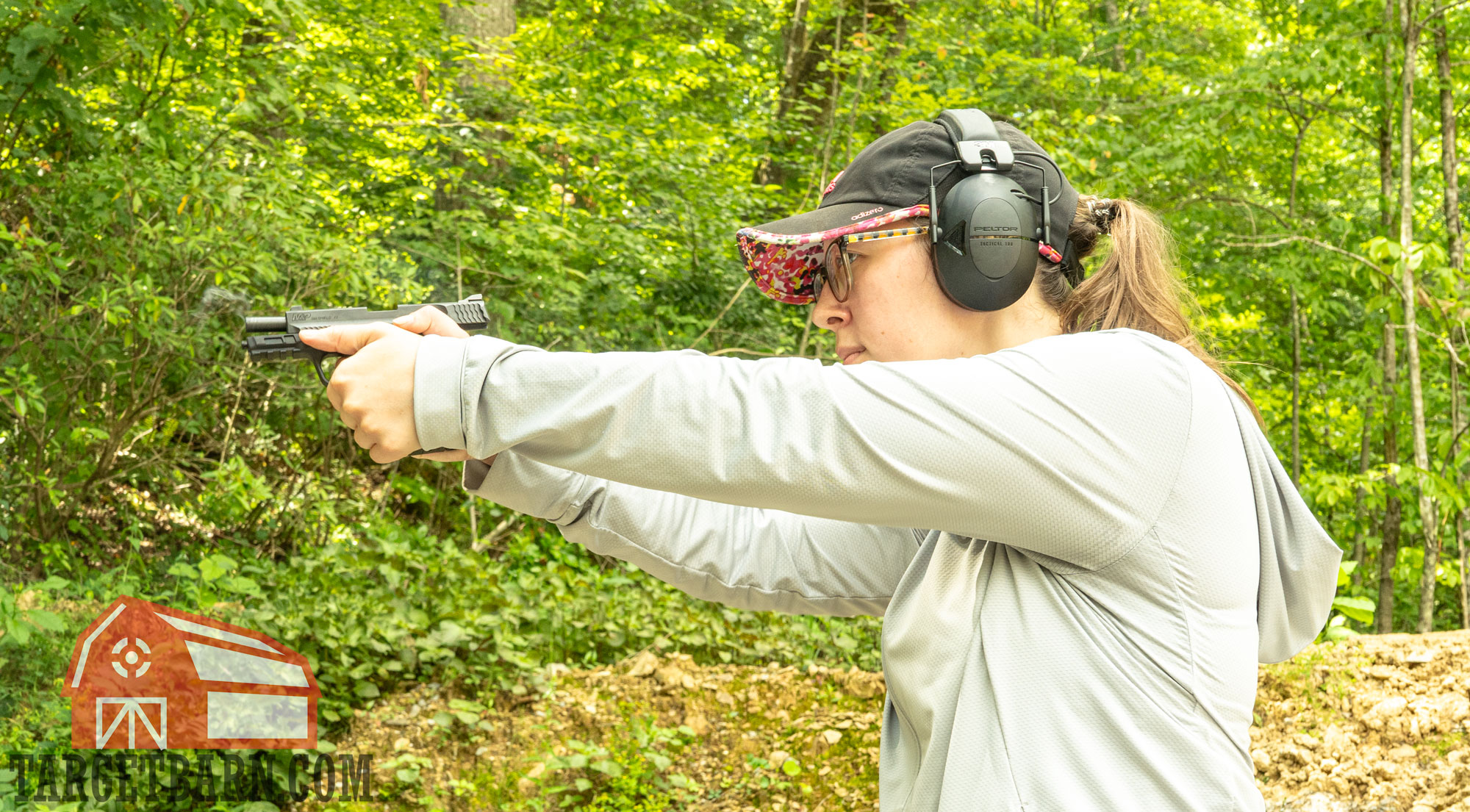
When it comes to determining which caliber has lighter recoil in the .22LR vs. 9mm debate, the answer is a no brainer. The .22LR has much lighter recoil than the 9mm.
The .22LR is often used to introduce new shooters to guns because it is so easy to shoot. Its recoil is incredibly soft, even in small, short-barreled pistols. This gives novice shooters an easy introduction to shooting, and many go on to shoot 9mm.
While 9mm is certainly not the snappiest handgun caliber, its recoil is much more noticeable. This is no surprise when you compare the size of the two rounds.
.22LR vs. 9mm for Self Defense
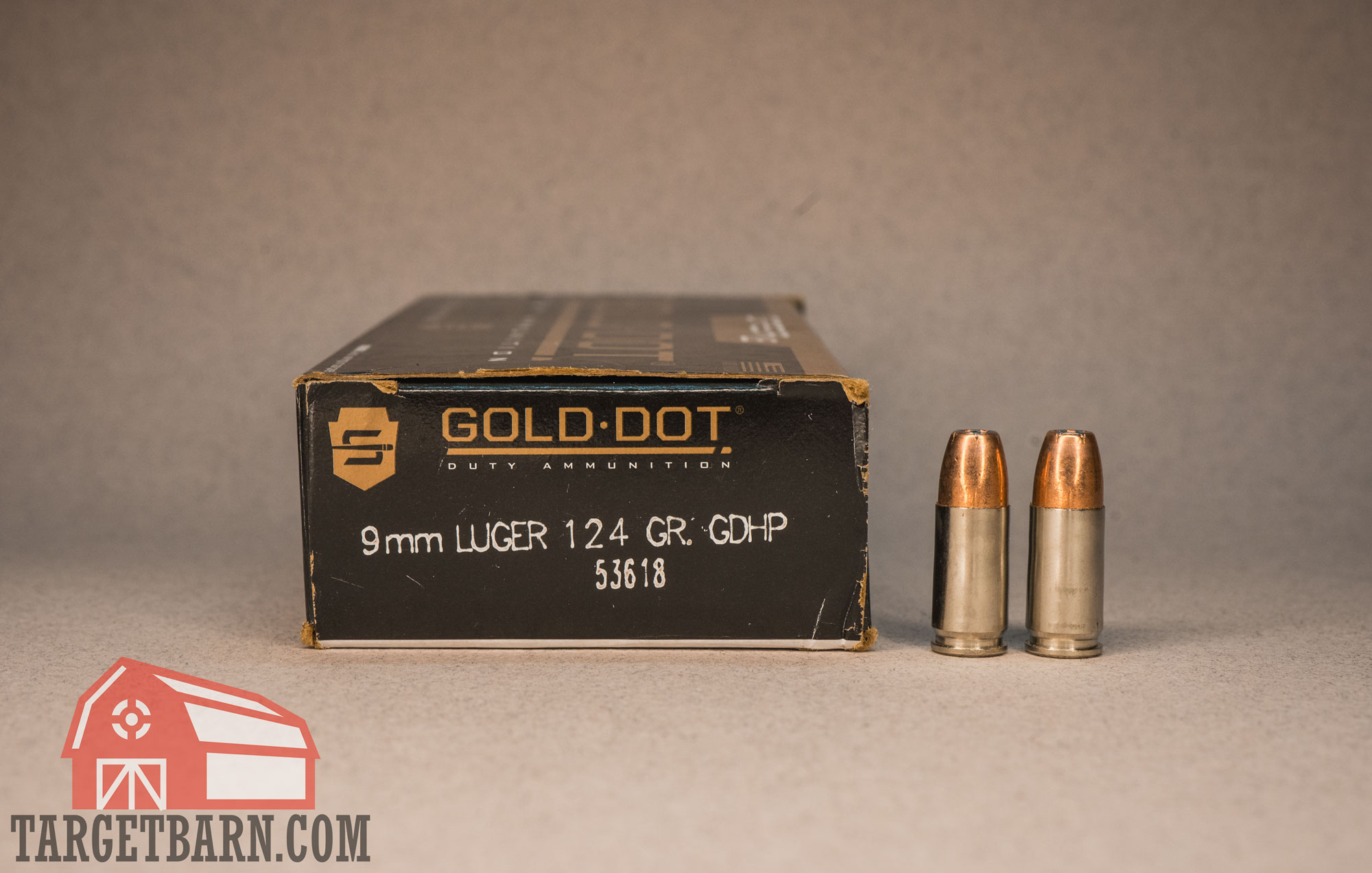
If you’re set on either the .22LR or 9mm for self defense, the better option is going to be the 9mm. There is a wide selection of 9mm ammo specifically loaded for self defense, and the caliber is trusted by the US military and law enforcement agencies across the country. It is also one of the most popular handgun calibers for self defense among civilians.
In a defensive situation, the 9mm will cause more damage to an attacker than the .22LR. With quality 9mm self defense ammo, the round is able to penetrate deep and expand upon hitting soft tissue, creating a large wound channel, hitting vital organs, and causing blood loss.
While some shooters use the .22LR for self defense, it is certainly not as effective as the 9mm. Shot placement matters for all handgun calibers, but it is especially important for the weaker .22LR as it will not cause the same amount of damage as the 9mm. That being said, someone might choose the .22LR if they don’t have the strength or ability to shoot a larger round. In that case, you should avoid hollow point rounds. While hollow point bullets are preferred in calibers like 9mm for self defense, it will actually hinder the .22LR’s ability to penetrate deeply enough to hit vital organs. A round like CCI Standard Velocity 40gr. LRN out of a .22LR rifle may be a better option as it will reach higher velocities needed to penetrate deeply.
.22LR vs. 9mm: Price
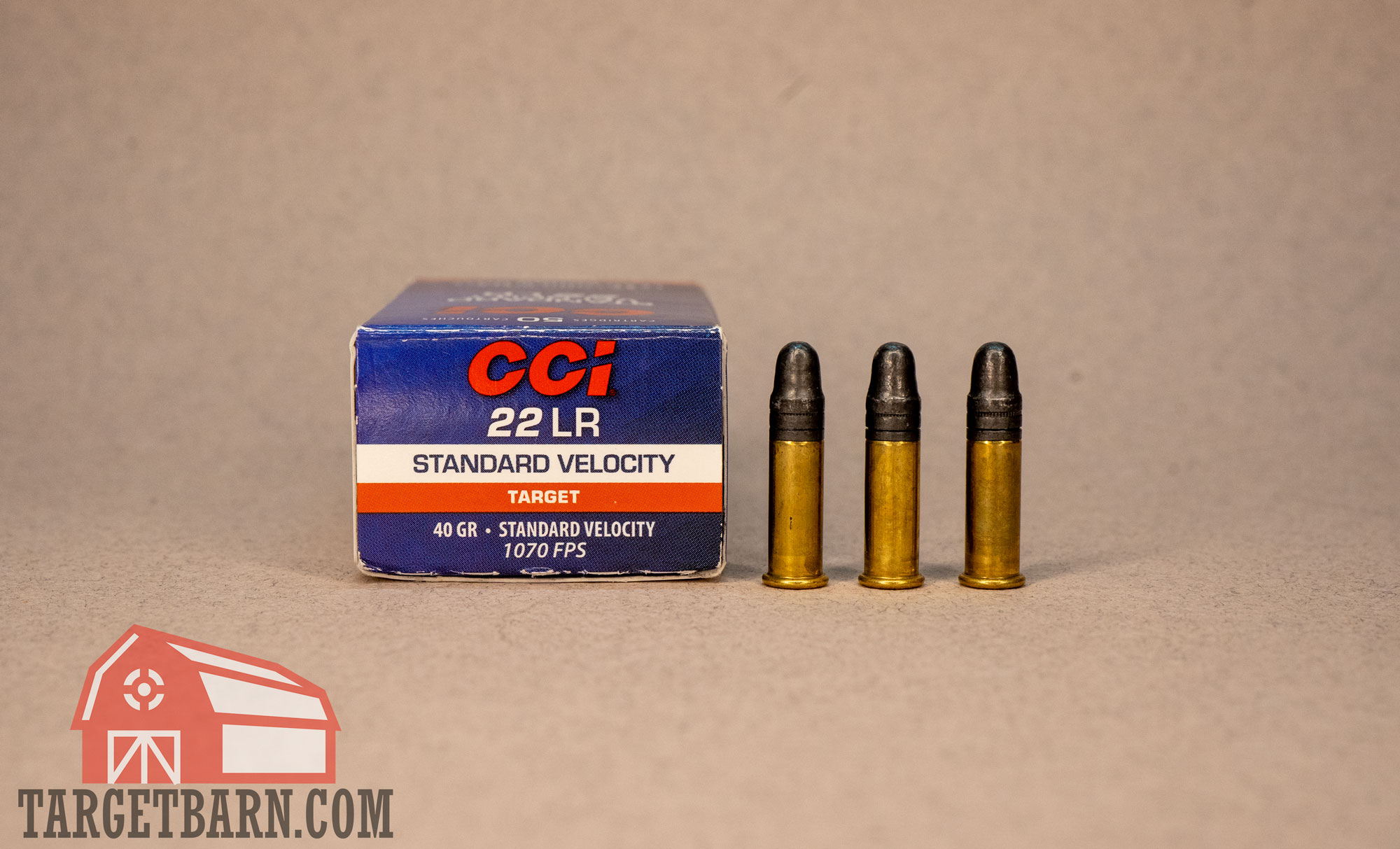
When comparing the price of the .22LR vs. 9mm ammo, the winner is pretty clear. The .22LR is usually the cheapest ammo you can find of any caliber. That’s why it is such a popular round for just plinking at the range and why so many shooting competitions have popped up around the caliber.
Final Thoughts
Whether you choose to go with the .22LR or 9mm depends on what you’re looking to do with the round. If you’re looking for a self defense round and have no major physical disabilities or set-backs keeping you from shooting, the 9mm is the way to go. Shooters looking to shoot for fun and on a budget will appreciate the .22LR’s affordable pricing and light recoil.
Whichever round you choose, our team here at Target Barn will keep you loaded with top-quality ammo at great prices!

